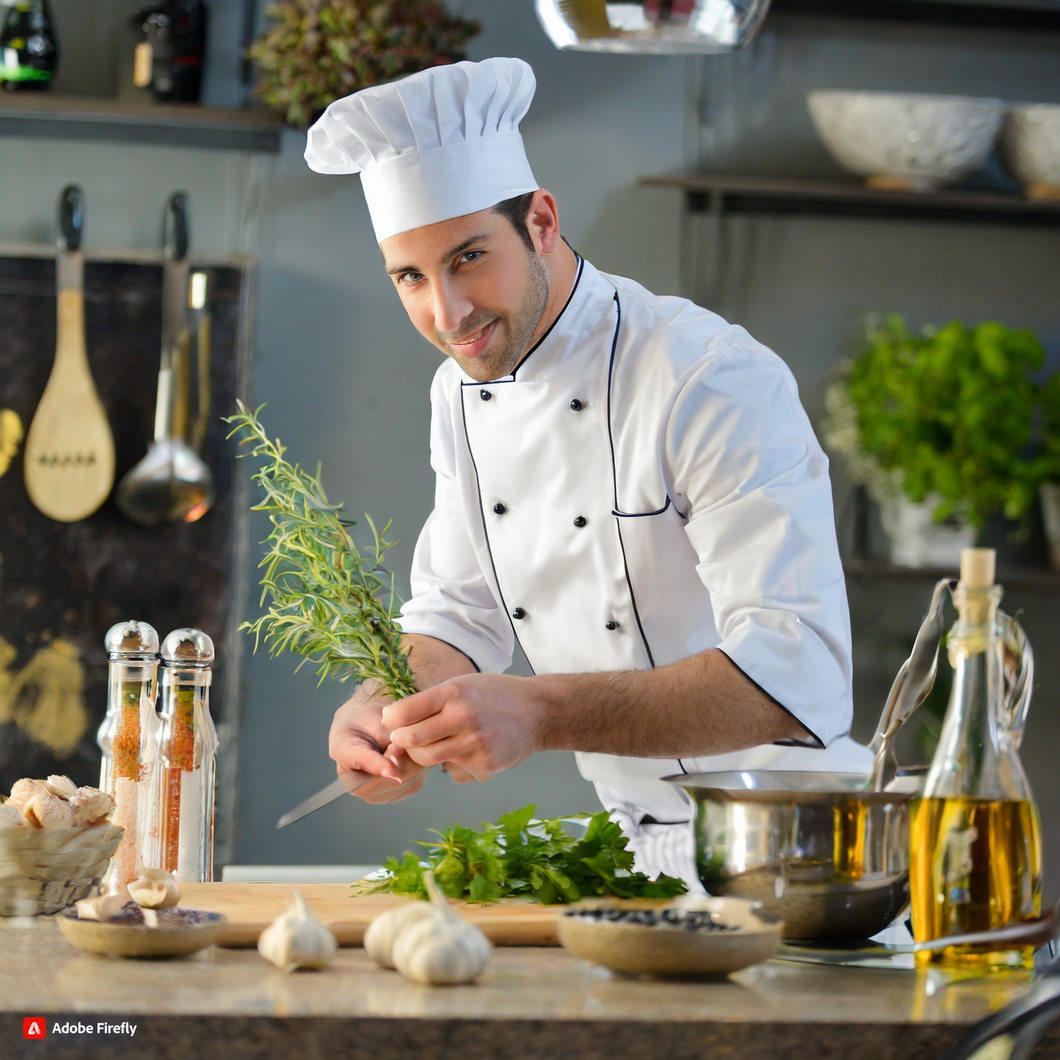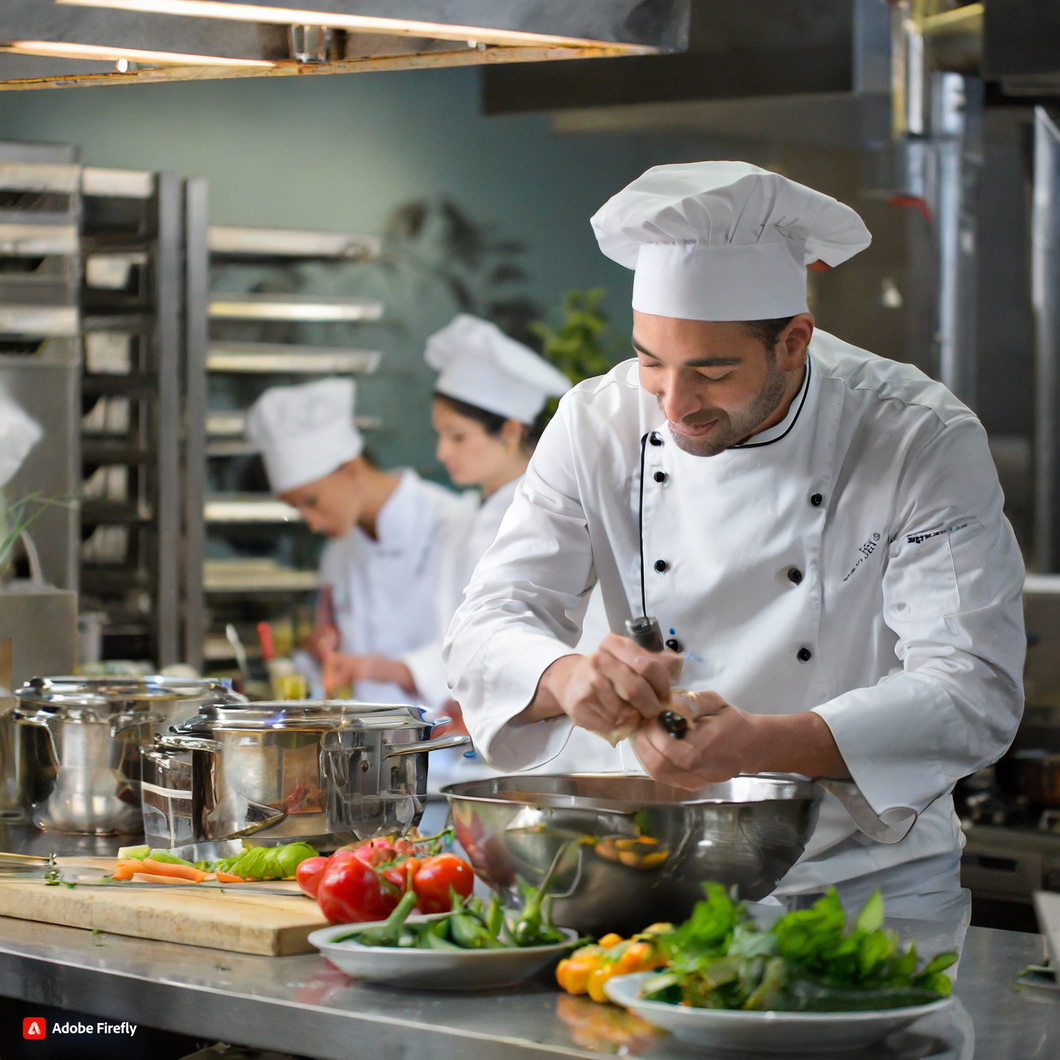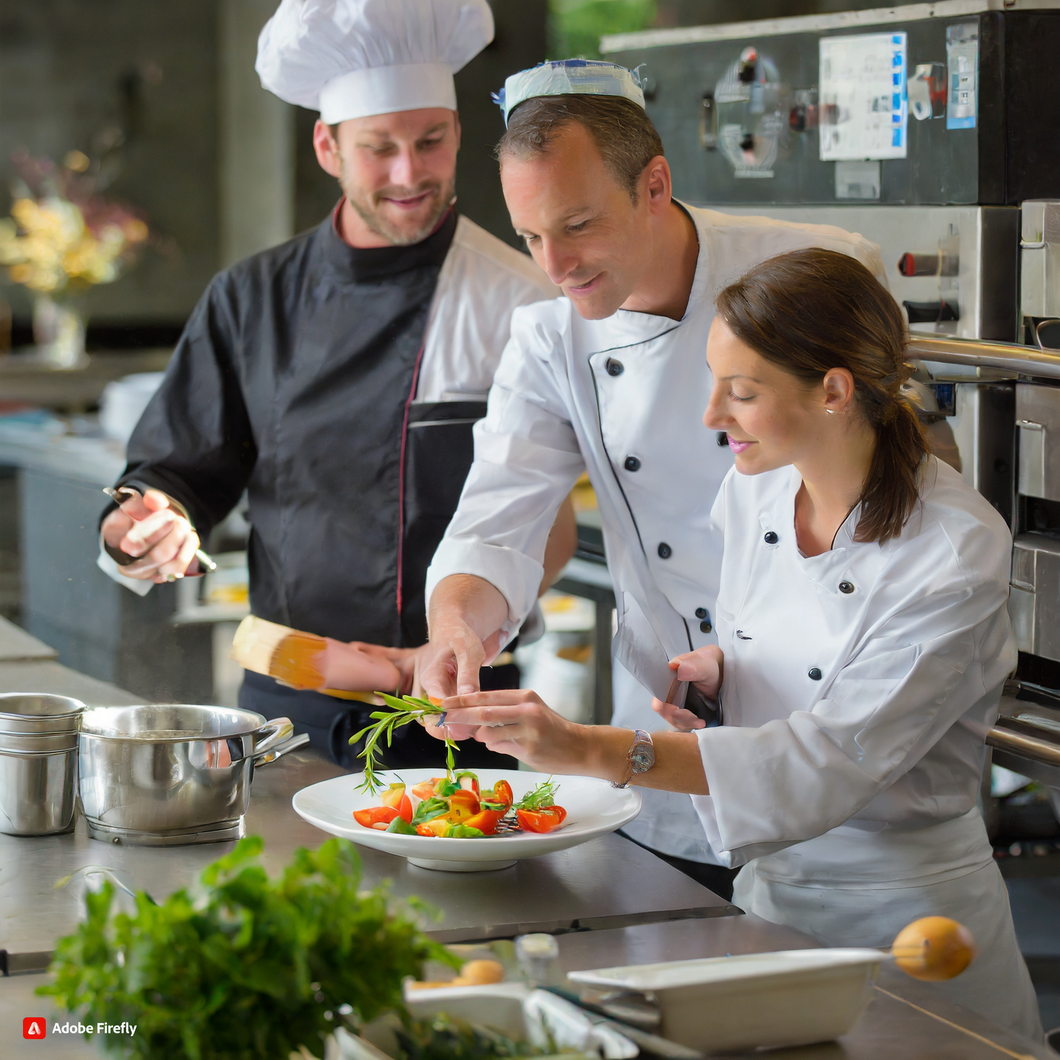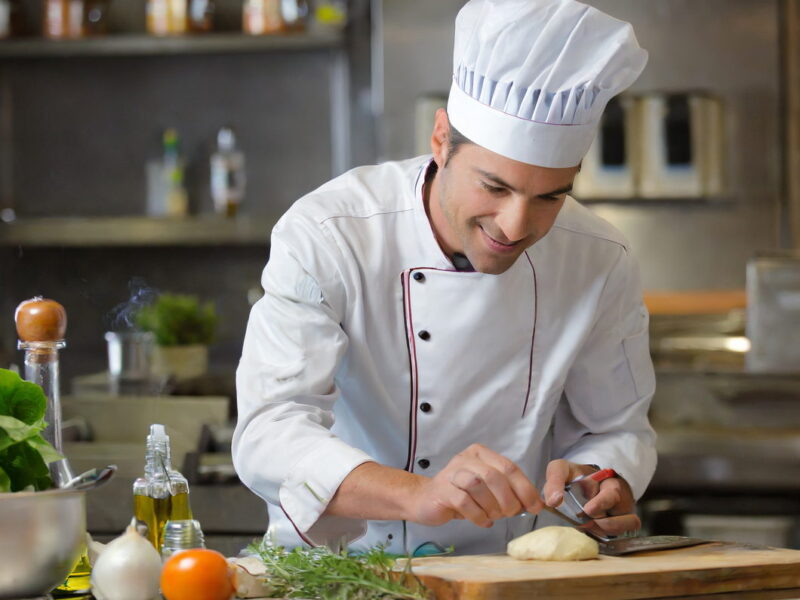Introduction
Master the Basics: Essential Culinary Techniques is a comprehensive guide to mastering the fundamental skills and techniques of cooking. Whether you are a beginner in the kitchen or an experienced cook looking to refine your skills, this book covers everything you need to know to become a confident and proficient cook. From knife skills and cooking methods to flavor profiles and ingredient selection, this book will equip you with the knowledge and techniques to create delicious and impressive dishes. With step-by-step instructions and helpful tips, Master the Basics will help you build a strong foundation in the culinary arts and take your cooking to the next level.
5 Essential Culinary Techniques Every Home Cook Should Master

Are you tired of feeling intimidated by complicated recipes and fancy cooking techniques? Do you want to elevate your cooking skills and impress your family and friends with delicious meals? Look no further, because in this article, we will be discussing the 5 Essential Culinary Techniques that every home cook should master.
1. Knife Skills
The first and most important technique in the culinary world is mastering knife skills. A sharp and well-maintained knife is a chef’s best friend. It not only makes cooking easier and more efficient, but it also ensures that your food is evenly cooked and looks visually appealing. Start by investing in a good quality chef’s knife and learn the proper way to hold and use it. Practice different cutting techniques such as dicing, mincing, and julienning. With time and practice, you will be able to chop like a pro.
2. Seasoning
Seasoning is the key to making any dish taste delicious. It is not just about adding salt and pepper; it is about balancing flavors and enhancing the taste of your food. Start by tasting your food as you cook and adjust the seasoning accordingly. Experiment with different herbs, spices, and condiments to find the perfect balance of flavors. Remember, a little goes a long way, so start with a small amount and add more if needed.
3. Cooking Methods
Knowing the different cooking methods is crucial in creating a variety of dishes. The most common methods include sautéing, roasting, grilling, and braising. Each method requires a different level of heat and time, so it is essential to understand the basics. For example, sautéing is cooking food quickly over high heat, while braising is cooking food slowly in liquid over low heat. Experiment with different methods to see which one works best for different types of food.
4. Temperature Control
Temperature control is another essential technique that every home cook should master. It is crucial in achieving the perfect texture and doneness of your food. Invest in a good quality thermometer and use it to check the temperature of your food while cooking. For example, a medium-rare steak should have an internal temperature of 135°F, while a well-done steak should have an internal temperature of 160°F. With practice, you will be able to tell the doneness of your food just by touch.
5. Plating
Last but not least, plating is the final touch that can elevate a dish from good to great. It is not just about making your food look pretty; it is about creating a balance of colors, textures, and flavors on the plate. Start by choosing the right plate for your dish and arranging the food in an aesthetically pleasing way. Use garnishes such as herbs, sauces, and edible flowers to add a pop of color and flavor. Remember, presentation is just as important as taste when it comes to food.
In conclusion, mastering these 5 Essential Culinary Techniques will not only make you a better cook but also give you the confidence to tackle any recipe. Remember to start with the basics and practice regularly. With time and patience, you will be able to create delicious and visually appealing dishes that will impress even the toughest food critics. So, put on your apron, sharpen your knives, and get cooking!
The Importance of Knife Skills in Mastering Essential Culinary Techniques
Are you looking to improve your cooking skills and take your dishes to the next level? Look no further than mastering the basics of Essential Culinary Techniques. These techniques are the foundation of any great dish and can elevate your cooking from amateur to professional. And one of the most important skills to master in the culinary world is knife skills.

You may be thinking, “I already know how to use a knife, what more is there to learn?” But trust us, there is a lot more to it than just slicing and dicing. Proper knife skills can make a huge difference in the taste, texture, and presentation of your dishes. So let’s dive into why knife skills are so important and how you can master them. Read Bread Recipes.
First and foremost, having good knife skills will save you time in the kitchen. When you know how to properly handle a knife, you can chop, slice, and dice ingredients quickly and efficiently. This means less time spent prepping and more time enjoying your delicious meal. Plus, with practice, you’ll become faster and more precise, making meal prep a breeze.
But it’s not just about speed and efficiency. Proper knife skills also ensure that your ingredients are cut evenly and consistently. This is crucial for cooking dishes that require even cooking times, such as stir-fries or stews. Unevenly cut ingredients can result in some pieces being overcooked while others are undercooked, leading to an unbalanced and unappetizing dish.
In addition, having good knife skills can also enhance the flavor of your dishes. When ingredients are cut properly, their natural flavors are preserved. On the other hand, if ingredients are roughly chopped or mashed, their flavors can become muddled and lost. This is especially important when working with delicate herbs and vegetables, where a slight change in cut can make a big difference in taste.
Now that we’ve established the importance of knife skills, let’s talk about how you can master them. The first step is to invest in a good quality chef’s knife. This is the most versatile and essential knife in any kitchen. Look for one with a sharp, sturdy blade and a comfortable handle. It may be a bit of an investment, but a good knife will last you a lifetime with proper care.
Next, it’s important to learn the proper grip and technique for holding a knife. This will not only ensure your safety but also help you achieve more precise cuts. The most common grip is the “pinch grip,” where you hold the knife with your thumb and index finger on the blade and the rest of your fingers wrapped around the handle. This allows for better control and maneuverability.
Once you have the right knife and grip, it’s time to practice your cutting techniques. Start with the basic cuts: slicing, dicing, and chopping. These are the building blocks of all other knife skills. Make sure to keep your fingers curled under and use the knuckles of your non-dominant hand as a guide for the blade. This will help prevent any accidents and also ensure that your cuts are consistent.
As you become more comfortable with the basics, you can move on to more advanced techniques like julienning, chiffonading, and mincing. These techniques require more precision and practice, but they will take your dishes to the next level. There are plenty of online tutorials and videos available to help you perfect these skills. Read easy Healthy Lunch for Weight Loss.
In conclusion, mastering knife skills is essential for any aspiring chef or home cook. It not only saves time and enhances the flavor of your dishes but also adds a level of professionalism to your cooking. So invest in a good knife, practice proper grip and technique, and soon you’ll be chopping like a pro. Happy cooking!
From Sautéing to Braising: A Guide to Essential Cooking Methods for Beginners
Are you a beginner in the kitchen, looking to improve your cooking skills? Or maybe you’re just tired of ordering takeout every night and want to start making delicious meals at home. Whatever your reason may be, mastering the basics of culinary techniques is the first step towards becoming a confident and skilled cook. In this article, we’ll guide you through some essential cooking methods that every beginner should know, from sautéing to braising.
Sautéing is a cooking method that involves quickly cooking food in a small amount of fat over high heat. It’s a great technique for cooking vegetables, meats, and seafood, and it’s perfect for those busy weeknights when you need to get dinner on the table fast. To sauté, start by heating a small amount of oil or butter in a pan over medium-high heat. Once the oil is hot, add your ingredients and stir them constantly to prevent them from burning. The key to successful sautéing is to keep the heat high and the ingredients moving, so they cook evenly and develop a nice golden color.

Another essential cooking method is roasting, which involves cooking food in the oven at a high temperature. Roasting is perfect for cooking large cuts of meat, whole chickens, and vegetables. To roast, preheat your oven to the desired temperature, and place your food on a baking sheet or in a roasting pan. Make sure to season your food with herbs, spices, and oil before putting it in the oven. Roasting allows the food to cook evenly and develop a crispy exterior while keeping the inside moist and tender.
If you’re a fan of one-pot meals, then braising is a technique you need to master. Braising involves cooking food in a small amount of liquid over low heat for an extended period. This method is perfect for tougher cuts of meat, such as beef brisket or pork shoulder, as the slow cooking process breaks down the tough fibers and results in tender and flavorful meat. To braise, start by searing your meat in a hot pan to develop a nice crust. Then, add your liquid of choice, such as broth, wine, or water, and let it simmer on low heat for a few hours until the meat is fork-tender.
Steaming is another essential cooking method that is perfect for cooking vegetables, seafood, and even dumplings. Steaming involves cooking food over boiling water, allowing it to cook through the steam. This method is great for retaining the nutrients and flavors of the food, making it a healthy and delicious option. To steam, fill a pot with a few inches of water and bring it to a boil. Place a steamer basket or a colander on top of the pot, making sure it doesn’t touch the water. Add your food to the basket, cover the pot, and let it steam for a few minutes until it’s cooked to your liking.
Last but not least, we have grilling, a cooking method that is perfect for outdoor gatherings and summer barbecues. Grilling involves cooking food over an open flame or hot coals, giving it a smoky and charred flavor. To grill, start by preheating your grill to medium-high heat and oiling the grates to prevent the food from sticking. Place your food on the grill and let it cook for a few minutes on each side, depending on the thickness and type of food. Grilling is a versatile cooking method that can be used for meats, vegetables, and even fruits.
In conclusion, mastering these essential cooking techniques will not only make you a better cook but also give you the confidence to experiment with different recipes and ingredients. Remember to always use high-quality ingredients and trust your instincts in the kitchen. With practice and patience, you’ll soon be cooking like a pro and impressing your friends and family with delicious and flavorful meals. Happy cooking!
Q&A – Essential Culinary Techniques
Q1: What is Master the Basics: Essential Culinary Techniques?
A1: Master the Basics: Essential Culinary Techniques is a cooking course or program that teaches fundamental skills and techniques in the culinary arts.
Q2: Who is this course designed for?
A2: This course is designed for anyone interested in learning the basics of cooking and improving their culinary skills, from beginners to experienced cooks.
Q3: What can I expect to learn from Master the Basics: Essential Culinary Techniques?
A3: You can expect to learn a variety of Essential Culinary Techniques, such as knife skills, cooking methods, flavor profiles, and plating techniques, as well as gain a deeper understanding of ingredients and how to create delicious dishes.
Conclusion for Essential Culinary Techniques
In conclusion, mastering the basics of culinary techniques is crucial for any aspiring chef or home cook. These fundamental skills lay the foundation for creating delicious and well-executed dishes. From knife skills to cooking methods, understanding and practicing the basics will not only improve the quality of your food, but also increase your confidence and creativity in the kitchen. Whether you are a beginner or an experienced cook, continuously honing your culinary techniques is essential for achieving culinary success. So, take the time to master the basics and watch your cooking skills and dishes reach new heights.
Please follow us on linkedin. You can learn all best canadian food recipes you can check our Culinary 1TouchFood Youtube and Telegram 1TouchFood page. Don’t forget Fighting Obesity Magazine and Radio Cooking.

